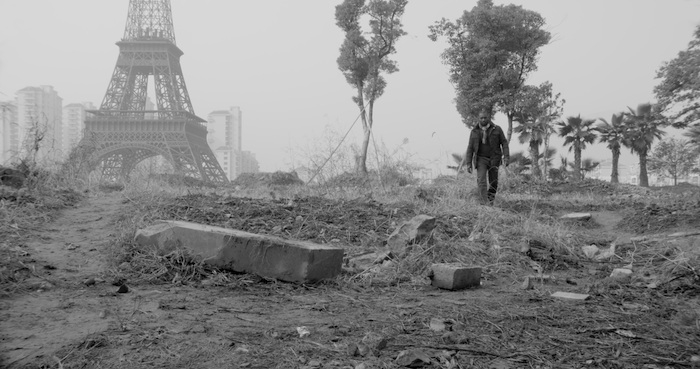Venice can be a bewildering place. The labyrinthine city of water – with its distinctive light – is maddening and bewitching at the best of times. ‘It is the Paradise of cities and there is a moon enough to make half the sanities of earth lunatic’ Ruskin wrote in a diary entry dated 1 May 1841. Further lunacy can be induced in the weary pilgrim by the art biennale, which previews on 29 May, opening to the wider public, 1 June. The amount of art the visitor is asked to see is in equal measure exciting and staggering, but forewarned is forearmed: ArtReview sent a questionnaire to a selection of the artists exhibiting in the biennale’s national pavilions, the responses to which will be published over the coming days. The aim? To discover who, what and why of the biggest art show on Earth.
Jesper Just will be representing Denmark. The pavilion is located in the Giardini.
What can you tell us about your plans for Venice?
Intercourses is an installation that deals with architecture, cultural dislocation and memory – real and imagined. I was thinking about connection and disconnection, ways to communicate with and through a location or space. I made a new film work, which will unfold in five channels, where the location is kind of the protagonist. The sound will unite the work.
Are you approaching the show in a different way to how you would with a ‘normal’ exhibition?
The exhibition begins once you set eyes on the pavilion. It starts before you enter the exhibition space proper, so in that sense it’s a different approach for me. I wanted to find a way to integrate the architectural space of the pavilion with the filmic space.
What does it mean to ‘represent’ your country? Do you find it an honour or problematic?
For me, it was impossible to ignore the fact that you’re representing one country in another country. The Danish Pavilion as a building provided a framework for looking at the cultural clash in the Giardini. You have this space where all the different nations are supposedly representing their individual culture and identity through various architectural signifiers (which in turn may have been appropriated from other cultures). There is something very homeless about the area: the way it is left deserted for a greater part of the year, the way it is one nation on another nation’s soil. Or maybe what characterizes that area is the exact opposite of homelessness? Perhaps what you witness there are little architectural acts of ownership? Thinking about this was what lead me to look into replica cities in the first place actually.
What audience are you addressing with the work? The masses of artist peers, gallerists, curators and critics concentrated around the opening or the general public who come through over the following months?
I hope anyone.
What are your earliest or best memories of the biennale?
The first time I went was in 1995. I went on a Monday and the exhibitions were closed. Not the best memory, but the earliest.
You’ll no doubt be very busy, but what else are you looking forward to seeing?
Gondolas
